Frogs are disappearing and climate change could be to blame

Frogs and toads are part of a diverse group of vertebrates known as amphibians. Since the 1970s, at least 200 frog species have been lost1, with hundreds of the remaining species of frog, along with other amphibians, expected to disappear in the next century – suggesting an imminent global mass extinction of amphibians.
There are numerous hypotheses on the causes of these disappearances. However, climate change, as the era-defining worldwide environmental issue of our time, stands out as a predominantly contributing factor. This is caused by the continuous accumulation of greenhouse gases, such as carbon dioxide. These gases are released into our atmosphere from anthropological activities, resulting in the trapping of more heat energy which in turn raises the Earth’s temperature2. Sadly, if global greenhouse gas emissions continue at the current rate, it is predicted that by 2100 the average temperature of the Earth’s surface will rise by up to 5°C3. Subsequently, this will lead to a multitude of further climatic changes which will negatively influence different aspects of amphibians’ lives including their immune systems, breeding patterns, habitats, embryo hatching success and may also promote biological malformation among others.
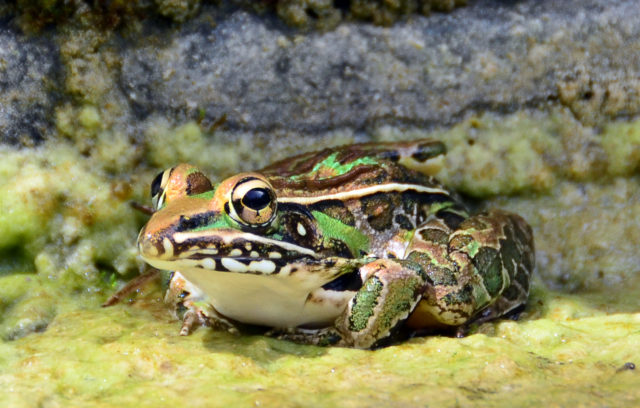
Arguably, one of the most significant negative impacts of climate change on amphibians to date is the exacerbation of the lethal disease – chytridiomycosis. Chytridiomycosis is a skin disease caused by the fungus Batrachochytrium dendrobatidis which affects the vital functions of amphibian skin. For example, it inhibits protection against abrasive damage and dehydration. This happens through fungal colonisation on the skin, whereby the fungus secretes specific enzymes that weaken the amphibians’ skin integrity. This, in turn, gives rise to ion imbalances resulting in a reduced rehydration ability of the skin cells4. According to researchers, this destructive fungus is capable of infecting all amphibian species. Indeed, across the globe, the deadly skin disease is attributed to the population decline of over 500 amphibian species (with frogs comprising 93% of these declines!) which makes it the most destructive invasive species that currently threatens amphibians globally5. It is also the cause of extinction of at least 90 confirmed amphibian species in the wild6.
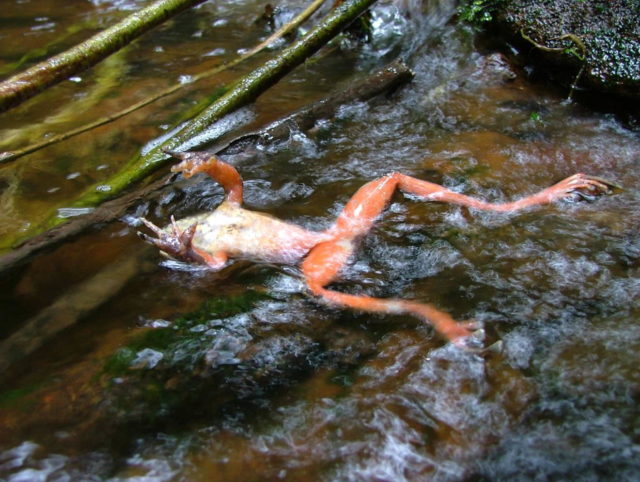
So, what is the connection between climate change and the increased lethality of chytridiomycosis? It has been observed that amphibians are more likely to succumb faster to the disease when temperature shifts unpredictably as their immune system is thought to be weakened7. In addition, parasites are assumed to be better at adapting to unpredicted environmental temperature changes compared to their hosts, owing to the hypothesis that smaller organisms can acclimate faster to changing temperatures than larger organisms which gives them a wider temperature breadth8. Unsurprisingly, frogs’ increased susceptibility to this fungus is only one of many bleak outcomes of climate change – it’s also altering their breeding pattern, with grim consequences.
As global weather patterns change, some frog species are starting to breed earlier in the year which means that tadpoles are hatching too soon into their environments. Frogs typically breed in the early spring in response to warming local temperatures, emerging from hibernation and migrating to nearby water bodies. However, thanks to warmer winters, frogs are being prompted to do this prematurely9. This means that frog embryos will develop too early in the year when the possibility of winter-relapses occurring is at its greatest. Winter relapses are potentially lethal to the static frog embryos as, if encased within the frozen water, the embryos are at risk of being mechanically crushed by expanding ice sheets10. Additionally, there is growing evidence that early hatching, thanks to earlier breeding, is changing the dynamics of the ecosystems in which amphibians thrive by impeding on interspecies interactions. For example, researchers have found that the Natterjack toad breeding sooner leads to increased competition with tadpoles of the already early-breeding Common Frog whose breeding times have not been altered by climate change. To further increase the complexity of the situation, a warming climate is also known to be responsible for increased precipitation variability11. This is most certainly problematic for many frog species due to their heavy reliance on water throughout their life cycles.
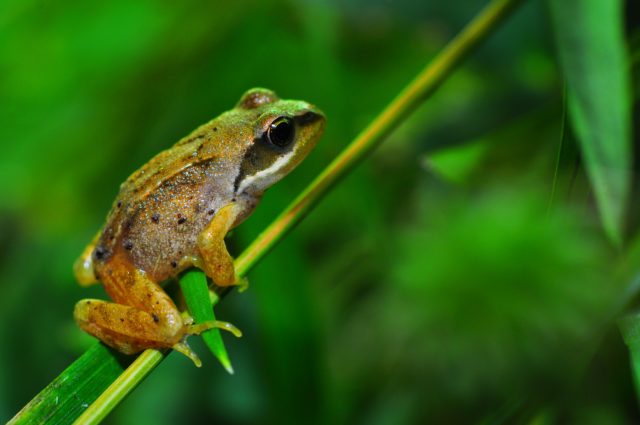
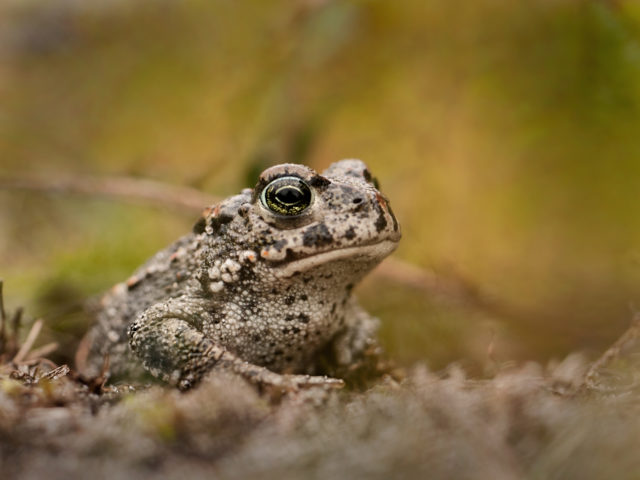
With climate change well underway, water reservoirs crucial for frog development are being lost. Frogs are known to lay their eggs in water where their larvae will undergo metamorphosis before emerging and entering their terrestrial environment. While some of these frogs use large water bodies such as rivers or ponds, others breed on land and are reliant on soil moisture as well as standing water for successful embryo development. Unfortunately, due to the reduction in precipitation in some parts of the world and an increase in severity of droughts12, this dependence is problematic as it inflicts a particular vulnerability onto terrestrial breeders such as the red-crowned toadlet which scientists have observed to have a higher embryo mortality rate in drier conditions, likely due to dehydration. These types of conditions can also make frogs more vulnerable to other external dangers, putting them at risk of unwanted complications during embryonic development and early life.
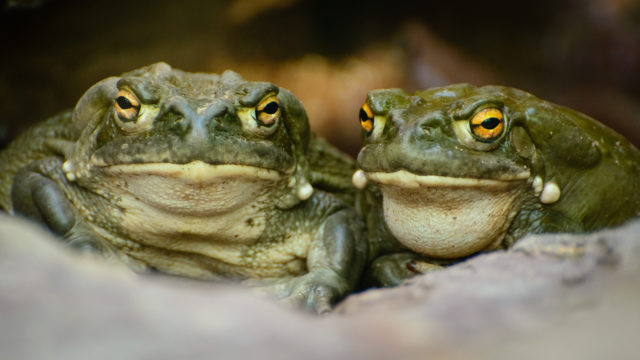
Another such danger is the increasing embryonic exposure of frogs to highly hazardous ultraviolet-B radiation owing to the reduced depth of water bodies13. UV-B radiation comprises of the biologically harmful wavelengths of light from the sun which significantly increase embryo mortality of some frog species as well as lower hatching success (e.g. Cascade frogs and Western Toads)14. Even if frog embryos are seemingly unaffected by the radiation and hatch as normal, alarming delayed effects such as biological malformations of the skin, tail, eyes and limbs15 can be linked to UV-B radiation16. Consequently, the formation of these anomalies has unfavourable impacts on frogs and can thwart their survival chances post-hatching. For example, spine curvature mutations in tadpoles could result in circular swimming, causing them to starve to death due to their inability to forage for food.
Sadly, not many people know and care about the amphibian’s population decline crisis. However, these often-overlooked creatures are more important to us than one might expect. For one, frogs keep insect populations under control with their arthropod-rich diets. Since many insects transmit numerous deadly human diseases (such as malaria), frog declines could be detrimental to human health worldwide. Additionally, the host of unique chemical compounds that frogs secrete have the potential to be modified for use in the treatment of human diseases including cancer17 and HIV18. Therefore, if we lose frogs, we lose the opportunity for these otherwise impossible medical advancements. The extinction of the Gastric Brooding frog is a dire example. With the ability to halt digestion owing to a special hormone, the Gastric Brooding frog raised its young in its stomach (while in any other creature, the offspring would have been digested by the stomach acids)19. At the time of the discovery, scientists believed that this hormone could be used in the treatment of stomach ulcers in humans but this possibility died shortly after, as the frog unpredictably went extinct20.
Frogs are irreplaceable members of our planet’s ecosystems, and the fact that these population declines and mass extinctions are happening so abruptly is alarming. Studies have shown that as a consequence of climate change, thousands of frogs are being massacred by environmental forces out of their control. Appallingly, their increased susceptibility to the deadly chytrid fungus, worrying behavioural changes, loss of habitats, as well as increased exposure to dangerous UV-B radiation, barely scratch the surface of the complexity and extent to which climate change is changing the lives of frogs, and indirectly ours. Doing something about it in 50 years will already be too late. Now, is the time to act. It is our responsibility to mitigate climate change, and to protect and conserve all of the world’s frogs as well as other amphibians before they all go extinct.
This article was specialist edited by Keshini Beetul and copy-edited by Dzachary Zainudden.
References
- www.washingtonpost.com/news/energy-environment/wp/2015/10/05/scientists-say-we-are-on-pace-to-generate-a-mass-extinction-of-frog-species/
- www.bbc.com/news/science-environment-24021772
- www.bbc.co.uk/news/science-environment-46384067
- https://veterinaryresearch.biomedcentral.com/articles/10.1186/s13567-015-0266-0
- www.nationalgeographic.com/animals/2019/03/amphibian-apocalypse-frogs-salamanders-worst-chytrid-fungus/
- www.zsl.org/science/news/mass-amphibian-extinctions-globally-caused-by-fungal-disease
- www.bbc.com/news/science-environment-19199197
- www.biorxiv.org/content/10.1101/473934v1.full
- https://amphibiaweb.org/declines/ClimateChange.html
- www.bbcwildlife.org.uk/unusual-frog-mortality
- www.carbonbrief.org/explainer-what-climate-models-tell-us-about-future-rainfall
- https://climate.nasa.gov/news/2881/earths-freshwater-future-extremes-of-flood-and-drought/
- https://amphibiaweb.org/declines/ClimateChange.html
- https://amphibiaweb.org/declines/UV-B.html
- https://info.hartwick.edu/biology/def_frogs/
- https://climatechangeresponses.biomedcentral.com/articles/10.1186/s40665-017-0034-7#Abs1
- www.nhs.uk/news/cancer/tadpoles-and-skin-cancer/
- https://australianmuseum.net.au/blog-archive/science/frog-goo-to-the-rescue/
- www.environment.gov.au/cgi-bin/sprat/public/publicspecies.pl?taxon_id=1909
- https://amphibiaweb.org/species/3543










